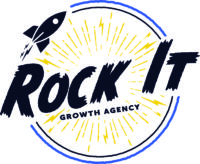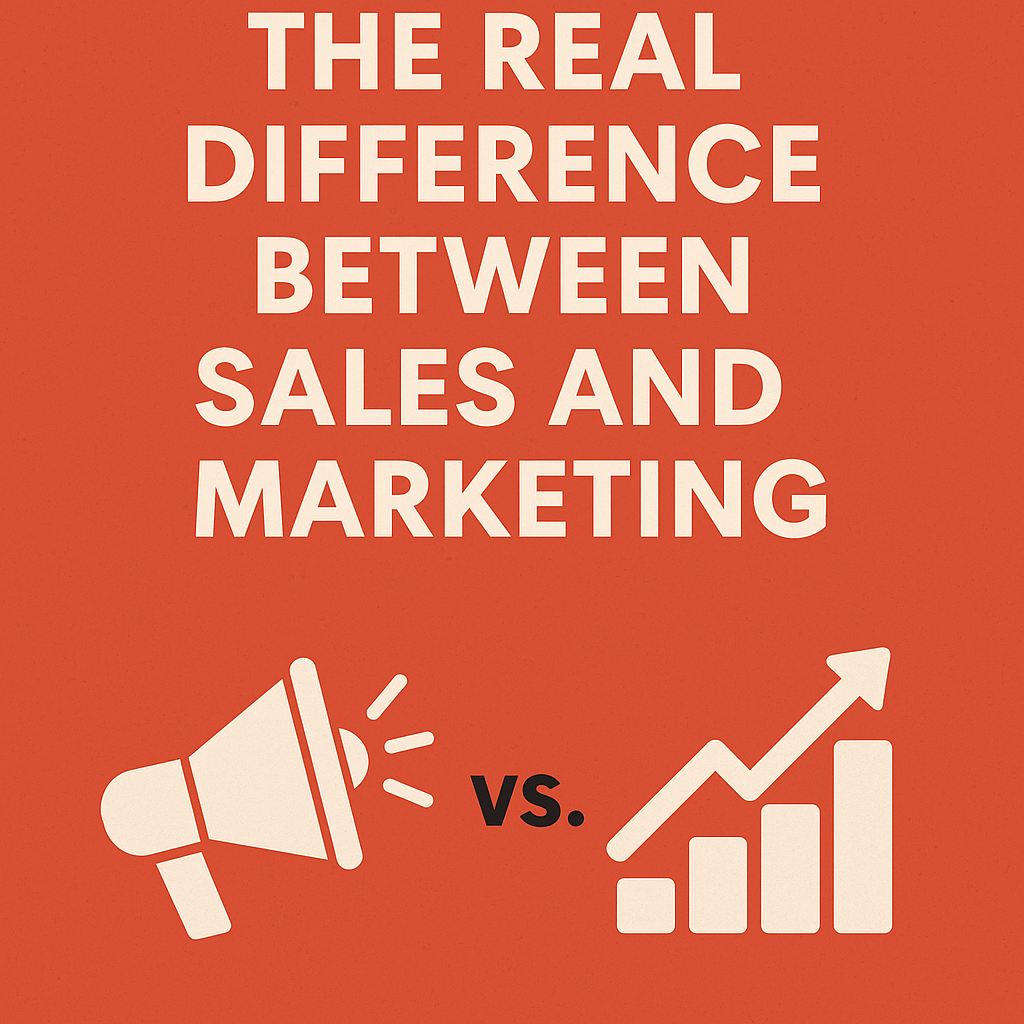If you’re a small business owner, creative professional, or marketing leader, you’ve probably heard that sales and marketing go hand in hand. That part is true. The problem is that many people treat them as the same thing, and when that happens, it costs real money and momentum. Understanding the difference between sales and marketing is critical to building a business that not only attracts attention but also converts that attention into loyal customers.
This article explains the real difference between sales and marketing for small businesses, why it matters, and how you can align both functions without spending a fortune.
Think of Your Business Like a Band
Here’s the easiest way to think about it. Marketing is what gets people to your show. It’s the flyers, the hype, the interviews, the social media posts, and the stories that make someone say, “Yeah, I want to check these guys out.” Sales is what happens once they’re there. It’s the performance that makes them buy the T-shirt, follow you online, or come back for the next show.
Marketing creates awareness and interest. Sales converts that interest into action. They are two sides of the same coin, and one doesn’t work without the other. You can’t sell to people who don’t know you exist, and you can’t rely on awareness alone to generate revenue. Marketing warms up your audience, while sales closes the deal.
Why So Many Businesses Get It Wrong
A common mistake among entrepreneurs and small business owners is expecting marketing to do the job of sales, or vice versa. That’s like putting up a killer poster for your concert and then wondering why no one has bought a ticket yet. Or worse, it’s like cold calling strangers and expecting them to care about your brand when they’ve never heard of you before.
Marketing and sales work in a sequence. Marketing builds trust and awareness. Sales builds relationships and closes deals. Confusing one for the other leads to wasted time, inconsistent results, and frustration.
The most successful businesses know how to align both. Marketing creates the conversation. Sales continues it and provides feedback to help refine future marketing. When these two areas talk to each other consistently, everything else becomes more efficient.
Three Budget-Friendly Ways to Align Sales and Marketing
If you’re running your business on a tight budget, you can still strengthen the connection between your sales and marketing efforts. These three simple strategies will help you bridge the gap.
1. Join or Start a Networking Group
One of the most effective ways to build awareness is by connecting with other business professionals in person or virtually. Join a local business networking group or start your own.
For example, I founded the New Jersey Business Exchange (NJBX) in 2018. We meet twice a month, both in person and on Zoom, to build genuine relationships and share ideas. It’s not about keeping score or counting referrals. It’s about building a community that supports one another.
You can start with just two or three people. Over time, it becomes a built-in marketing system that creates consistent visibility and trust. Networking is relationship-driven marketing in its purest form.
2. Build and Email Your List
If you don’t have an email list, stop reading for a moment and start one. Seriously. Your email list is one of your most valuable marketing tools because it allows you to talk directly to your audience without relying on algorithms or ad spend.
Start by gathering contact information from everyone you’ve done business with or met in the past five years. Include friends, colleagues, and customers. Use email platforms like MailerLite, Mailchimp, ConvertKit, or Constant Contact to organize and send your messages.
Send consistent updates, helpful tips, and stories about your business. The key is not to vanish. Staying in touch keeps you top of mind, and when the timing is right, those same people are far more likely to buy or refer you. If managing a list feels overwhelming, you can start a free newsletter on Substack. It’s simple and requires little technical know-how.
3. Reconnect with People You Already Know
This may sound obvious, but one of the fastest ways to generate business is to reconnect with people already in your network. Schedule 15 minutes each day to reach out to past contacts or colleagues. You can use a simple message like, “Hey, I was thinking about some of the great people I’ve met this year, and you came to mind. How have you been? Want to catch up for a quick chat?”
These check-ins are authentic, low-pressure, and effective. Every conversation is an opportunity to remind someone what you do, learn what they’re working on, and explore how you can help each other.
Be specific when you talk about what you’re looking for. Instead of saying, “I want to meet more small business owners,” say, “I’m looking to connect with home service or construction company owners who are struggling with marketing and want to grow between one and ten million in revenue.” Specificity makes it easier for others to connect you to the right people.
Aligning Your Sales and Marketing Teams
Even if you have separate teams or roles for sales and marketing, they should always communicate. Salespeople hear objections directly from customers. That information is gold for marketers, who can use it to adjust messaging, create better content, and anticipate customer concerns.
Likewise, marketers can provide sales with insights about campaign performance, lead sources, and engagement trends. This helps sales teams prioritize prospects and close deals more effectively. The two functions should collaborate, not compete. When they do, results improve across the board.
The Bottom Line
Sales and marketing are not the same. Marketing attracts attention and builds trust. Sales converts that trust into revenue. They are separate disciplines that depend on each other to succeed.
You don’t need a huge budget to make them work together. What you do need is consistency, communication, and a willingness to show up. Whether you start by joining a networking group, emailing your list, or reconnecting with your network, the goal is the same: stay visible, stay engaged, and keep the conversation going.
Your brand isn’t just your logo. It’s your voice, your vibe, and your energy. When marketing and sales move in rhythm, your business becomes unstoppable.
Want to chat – set up a call with me!

